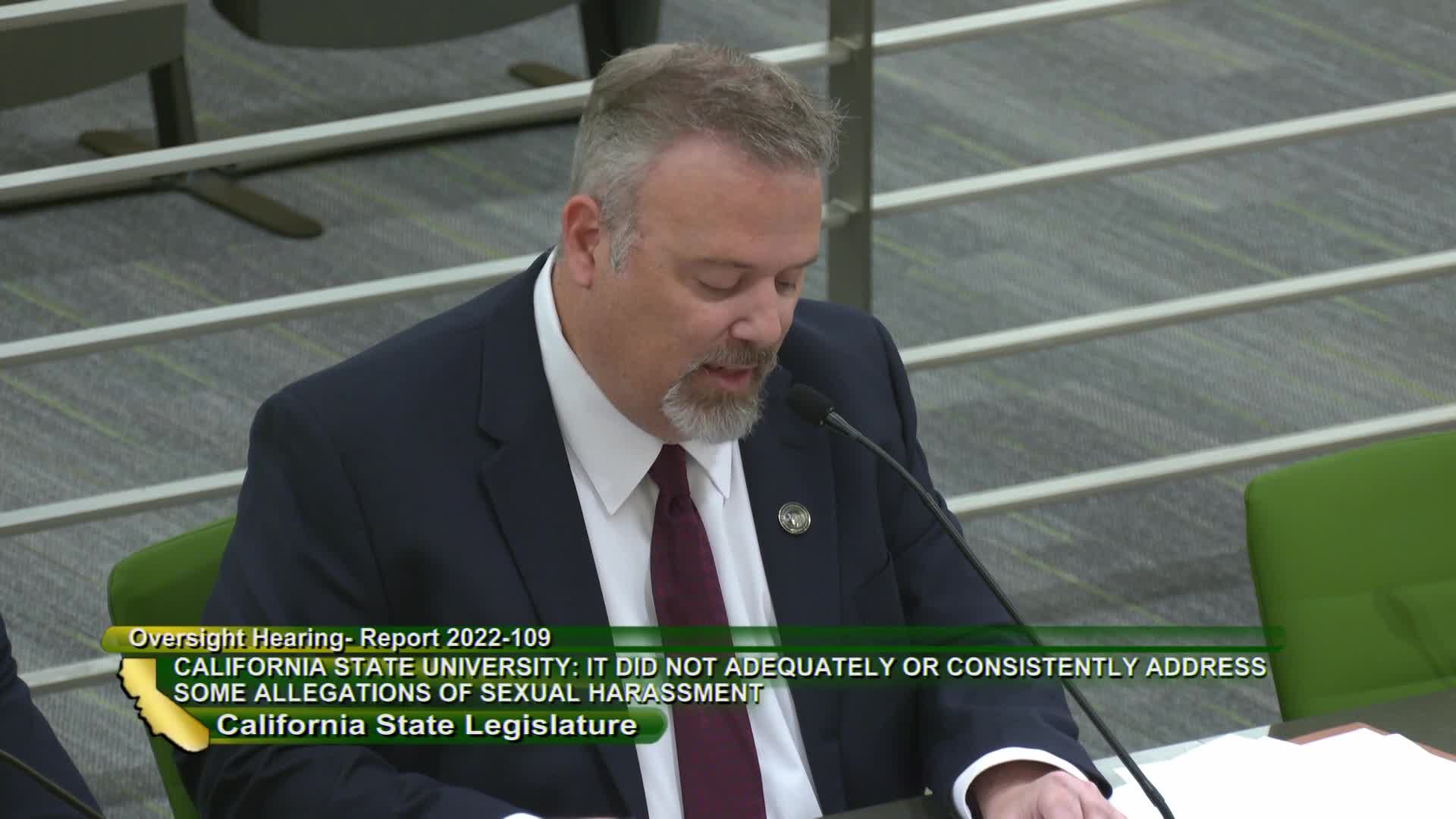CSU audit reveals inconsistencies in sexual harassment data collection across multiple campuses
August 31, 2023 | California State Assembly, House, Legislative, California
This article was created by AI summarizing key points discussed. AI makes mistakes, so for full details and context, please refer to the video of the full meeting. Please report any errors so we can fix them. Report an error »

In a recent joint hearing held by the California State Assembly, critical discussions unfolded regarding the handling of sexual harassment data within the California State University (CSU) system. The meeting, which took place on August 31, 2023, highlighted significant inconsistencies in how campuses document and manage sexual harassment cases, raising concerns about the effectiveness of current policies.
As the meeting commenced, the atmosphere was charged with urgency. The Auditor's Office presented findings that revealed a troubling lack of uniformity in the data collection processes across CSU campuses. Notably, the Chancellor's office has not provided clear guidance on what specific information should be documented in case management systems, leading to discrepancies in reporting. Some campuses do not even utilize a standardized case management system, further complicating the situation.
The discussion turned to the implications of these inconsistencies. The Department of Justice and the National Association of Student Personnel Administrators have emphasized the importance of analyzing sexual harassment data to identify trends and prevent future incidents. However, the lack of comprehensive data collection means that potentially high-risk employees, those with multiple allegations against them, remain unidentified. This gap in oversight raises serious questions about the safety and accountability within the CSU system.
The Auditor's Office outlined five pages of recommendations aimed at enhancing CSU's investigative practices and documentation processes. The Interim Chancellor of CSU acknowledged these findings and expressed agreement with the proposed changes, signaling a commitment to improving the handling of sexual harassment cases.
As the hearing progressed, committee members sought clarity on the discrepancies in reported sexual harassment incidents. The Auditor's report identified 1,200 cases from 2018 to 2022, while other reports cited significantly lower numbers. The differing methodologies used to compile these statistics were a focal point of discussion, with the Auditor's team explaining their rigorous approach of corroborating data through individual case files.
The meeting concluded with a sense of determination to address these pressing issues. The commitment from CSU leadership to implement the Auditor's recommendations offers a glimmer of hope for more effective management of sexual harassment cases in the future. As the committee members left the hearing room, the weight of their responsibility lingered—ensuring that the safety and well-being of students remain a top priority in California's higher education landscape.
As the meeting commenced, the atmosphere was charged with urgency. The Auditor's Office presented findings that revealed a troubling lack of uniformity in the data collection processes across CSU campuses. Notably, the Chancellor's office has not provided clear guidance on what specific information should be documented in case management systems, leading to discrepancies in reporting. Some campuses do not even utilize a standardized case management system, further complicating the situation.
The discussion turned to the implications of these inconsistencies. The Department of Justice and the National Association of Student Personnel Administrators have emphasized the importance of analyzing sexual harassment data to identify trends and prevent future incidents. However, the lack of comprehensive data collection means that potentially high-risk employees, those with multiple allegations against them, remain unidentified. This gap in oversight raises serious questions about the safety and accountability within the CSU system.
The Auditor's Office outlined five pages of recommendations aimed at enhancing CSU's investigative practices and documentation processes. The Interim Chancellor of CSU acknowledged these findings and expressed agreement with the proposed changes, signaling a commitment to improving the handling of sexual harassment cases.
As the hearing progressed, committee members sought clarity on the discrepancies in reported sexual harassment incidents. The Auditor's report identified 1,200 cases from 2018 to 2022, while other reports cited significantly lower numbers. The differing methodologies used to compile these statistics were a focal point of discussion, with the Auditor's team explaining their rigorous approach of corroborating data through individual case files.
The meeting concluded with a sense of determination to address these pressing issues. The commitment from CSU leadership to implement the Auditor's recommendations offers a glimmer of hope for more effective management of sexual harassment cases in the future. As the committee members left the hearing room, the weight of their responsibility lingered—ensuring that the safety and well-being of students remain a top priority in California's higher education landscape.
View the Full Meeting & All Its Details
This article offers just a summary. Unlock complete video, transcripts, and insights as a Founder Member.
✓
Watch full, unedited meeting videos
✓
Search every word spoken in unlimited transcripts
✓
AI summaries & real-time alerts (all government levels)
✓
Permanent access to expanding government content
30-day money-back guarantee

